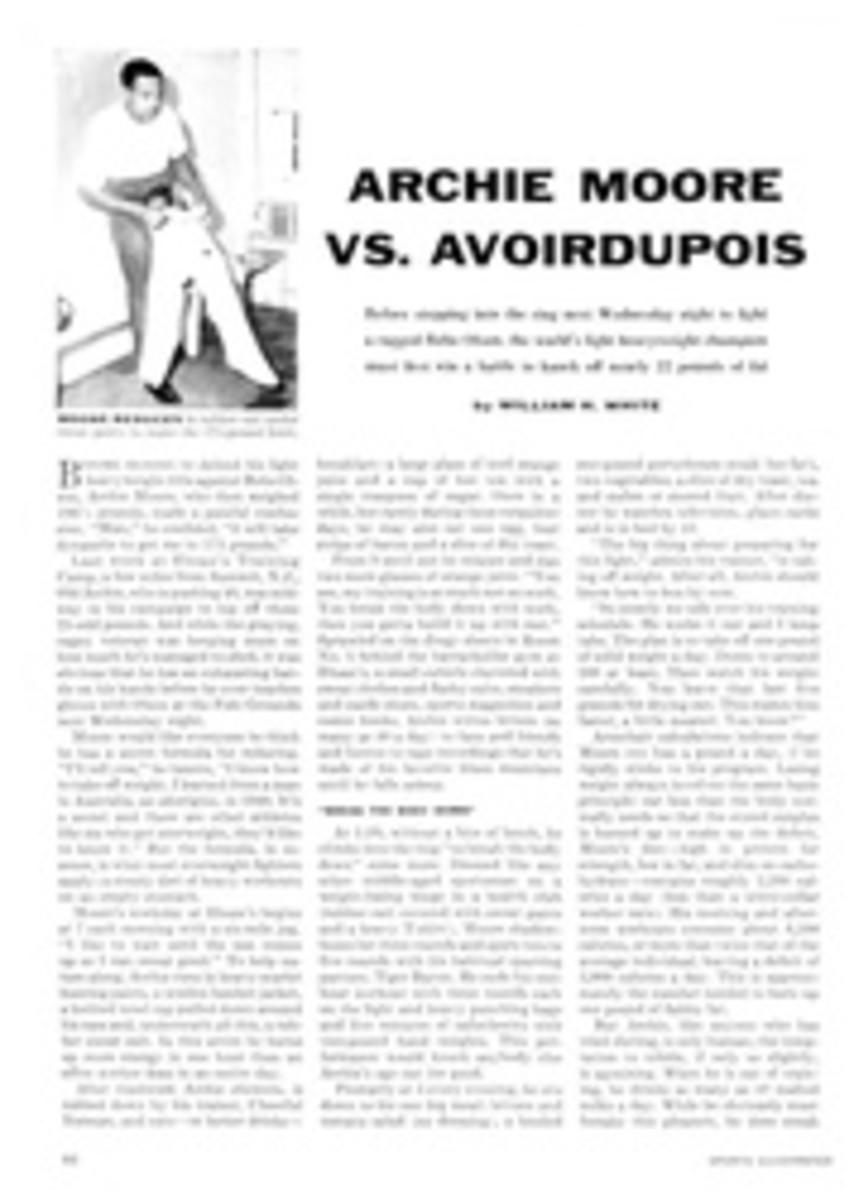
HIGH-JUMPING BABIES
Now, and for the next month, tarpon will be at the peak of their season in the broad tidal bays and rivers which break the sweeping curve of the Gulf Coast. Sought from Mexico to Miami, but perhaps most intensively along Florida's west coast from Cape Sable to Tampa, the tarpon is the Gulf's great game fish—big tarpon, that is, say from 50 pounds up. Lesser known—but no less exciting—is the sport of angling for so-called baby tarpon in canals, estuaries and rivers running into salt water.
Sometime in late spring the big tarpon concentrate on the edge of the Gulf and school up to spawn. The resulting fry move up the tidal creeks and fresh rivers to mature in sheltered shallow waters until they can attain the proportions necessary for survival in the sea. In these small mangrove-lined streams, which swell and fall with the tides, tarpon range in size from that of small bream to hungry 30-pounders. (The mature seagoing fish weighs up to 200 pounds or more.)
They are true game fish right from the egg. Tiny tarpon only weeks old can be taken on light trout tackle and flies. The baby babies are almost as hard to land as their massive parents and are prized trophies for the really good fly caster. The babies are fish to try the best of anglers who use trout and bass-weight fly rods, spinning gear or light bait-casting rods. Spin casters use 6-to 10-pound monofilament, bait casters 10-to 15-pound test line, depending on the sensitivity of their thumbs and the speed of their reflexes in releasing the spool at the beginning of a fast rush.
Baby tarpon are found upstream wherever the tarpon ranges, but perhaps the most productive waters are those which encompass Florida's Ten Thousand Islands region. The islands stretch 60 miles along the lower west coast from Naples to Ponce de Leon Bay at the mouth of Shark River. They comprise a total area of nearly 600 square miles.
The majority of the islands are tiny oyster bars covered with dense mangrove thickets. The number grows annually as oyster shells pile up above low-tide levels and provide a rooting ground for mangroves. Some of the islands are large, six to 10 miles long, a mile wide, and contain high ground in all but the rare super tides.
The islands abound in insect life. In the best of the season the tarpon fishermen must be able to endure the fiery sand fly and be prepared to enjoy fishing in a bath of mosquito repellent. May, June and July are top months for baby tarpon, but a determined fisherman can take them any time. In the winter months they are harder to find and harder to make strike, as well as harder to hook and boat.
Tarpon are constantly on the move after they reach five pounds. They work in the channels of the creeks between the shallow bays. They are here today, gone tomorrow and must be hunted out. There are days when they are nowhere to be found. The smallest tarpon lie still in the cover of the mangrove roots, waiting for shrimps or minnows to drift by on the outrunning tide. In the inside waters of the Ten Thousand Islands, all game fish feed on the ebbing tide, and are most active from half out to the slack water of the turn. Outside, on the edge of the Gulf, they feed on the incoming tide as well, as food fish push in from the sea.
As the baby tarpon moves and feeds, it gives the angler his single advantage. Fishermen always know when they are "in" tarpon. The fish has a curious roll similar to a feeding porpoise, except that the tarpon shows only its dorsal fin and tail. The loosely formed schools of tarpon are hunted down in fast utility runabouts powered by inboard engines from 100 hp up. Astern, the runabouts tow fishing skiffs powered by outboards of from 10 to 25 hp. The fast boats cover the watery miles of the Ten Thousand Islands; the skiffs—manned by veteran guides—penetrate mangrove-canopied creeks where it seems nothing could pass.
APPROACHING THE FISH
Since tarpon are sensitive to the grind of gasoline engines and the pounding slap of fast boats, the skiff fisherman must cut his outboard power the instant he sights a rolling fish, and push ahead on oars. He must keep carefully to the side of the channels in which the feeding fish move up and down, rolling as they strike. The tarpon fisherman presents his plug, or streamer, if he uses a fly rod, across the channel just to the edge of the jutting mangrove roots, and preferably in a direction quartering upstream from the boat. When they are striking freely, tarpon will hit almost anything that moves in the water. But good days or bad, they are most often hooked on a darting plug which will come to the top when it is motionless. The silver-flash finish attracts more strikes.
Fished properly, the tarpon plug is retrieved across the surface in short water-popping jerks, then pulled under in final retrieve halfway to the boat. No line is recovered during the jerks so that the plug lies still for an instant while the fisherman reels in. In these split seconds, or just after the plug is pulled underwater on the final retrieve, the water will sometimes boil up in a violent turbulence unmatched by the rise of any other game fish.
It is at the moment of the strike that most fish are lost, because the fish's reflexes are faster than the angler's. Veteran guides estimate that no more than one in 20 strikes, on the broad average, produces a boated tarpon. The tarpon's greatest asset in his struggle with the sport fisherman is his hard mouth, heavily armored with a plate of bony fiber. The hook must be set with great speed and force and it cannot be set at all unless it has been honed to needle sharpness. By the time most fishermen have begun to strike back the tarpon has started to reject the false food. If there is strong rod pressure the plug bullets toward the boat and many an unwary tarpon fisherman or his guide or companion has been firmly hooked instead of the fish.
Sometimes the tarpon's vicious lunge will overshoot and it will literally inhale the plug. The hooks will set in its gills and give the tarpon fisherman his highest odds. A gill set is recognizable on the second jump when the fish begins to stream blood down its silvery sides.
The most satisfactory set is just behind the fish's mouth where the chances can be rated about even for fish and fisherman. When the hook is set only in the front of the mouth the angler usually has good sport and no fish. He will get half a dozen powerful jumps. Then the plug comes sailing out.
The tarpon's jump alone is worth the trip, the time, the sand flies and the mosquitoes. It is a thing of great beauty, of fighting power unleashed, and it can happen not 6 feet from the boat. At the top of its leap the tarpon shakes its massive head with a fury that rattles its gill covers audibly and the plug like a child's toy. The angler prays that a fish will keep on jumping—but not too close to the boat.
If the tarpon fails to throw the plug, it has another important route to freedom. It can break the line. Its rushes away from the boat are enough to accomplish this if the fish is handled too tightly. If it is handled too loosely, the tarpon goes under the mangroves and breaks the line on the roots.
Should all these efforts fail the fish, it sometimes has a master tactic. It charges directly at the boat, forcing the fisherman to reel in desperately in order to take up dangerous slack. The tarpon ducks under the boat and it jumps with all its power against the tight line on the other side. This is infallible if the fisherman cannot swing his rod tip under and around the bow or stern. The outboard motor adds interestingly to the hazard for the angler.
THE LAST EFFORT
In the one out of 20 strikes when none of the factors favoring the fish is controlling, the thing will end in the final fate to which the tarpon's fighting heart has driven him. After the rushes and a dozen or more jumps, which even the smallest fish have in them, the tarpon will come to the surface and make a tail-lashing effort to get into the air once more.
The best baby-tarpon waters can be approached from the northwest at Naples, from the northeast at Everglades and from the south at Cape Sable. It is dangerous to go in without an experienced guide, but the open bays at the Gulf edge are safe enough for the tyro. There is a lot of water here, more of it without fish than with them. A good guide is indispensable in hunting the tarpon. He is invaluable for the personal instruction, which even the veteran fisherman who has not boated tarpon will find he needs.
PHOTO
MARK KAUFFMAN
RACING DOWN A WATERWAY IN FLORIDA'S TEN THOUSAND ISLANDS, ANGLERS SEARCH FOR A SCHOOL OF FEEDING TARPON
ILLUSTRATION
"Very funny...very funny..."

